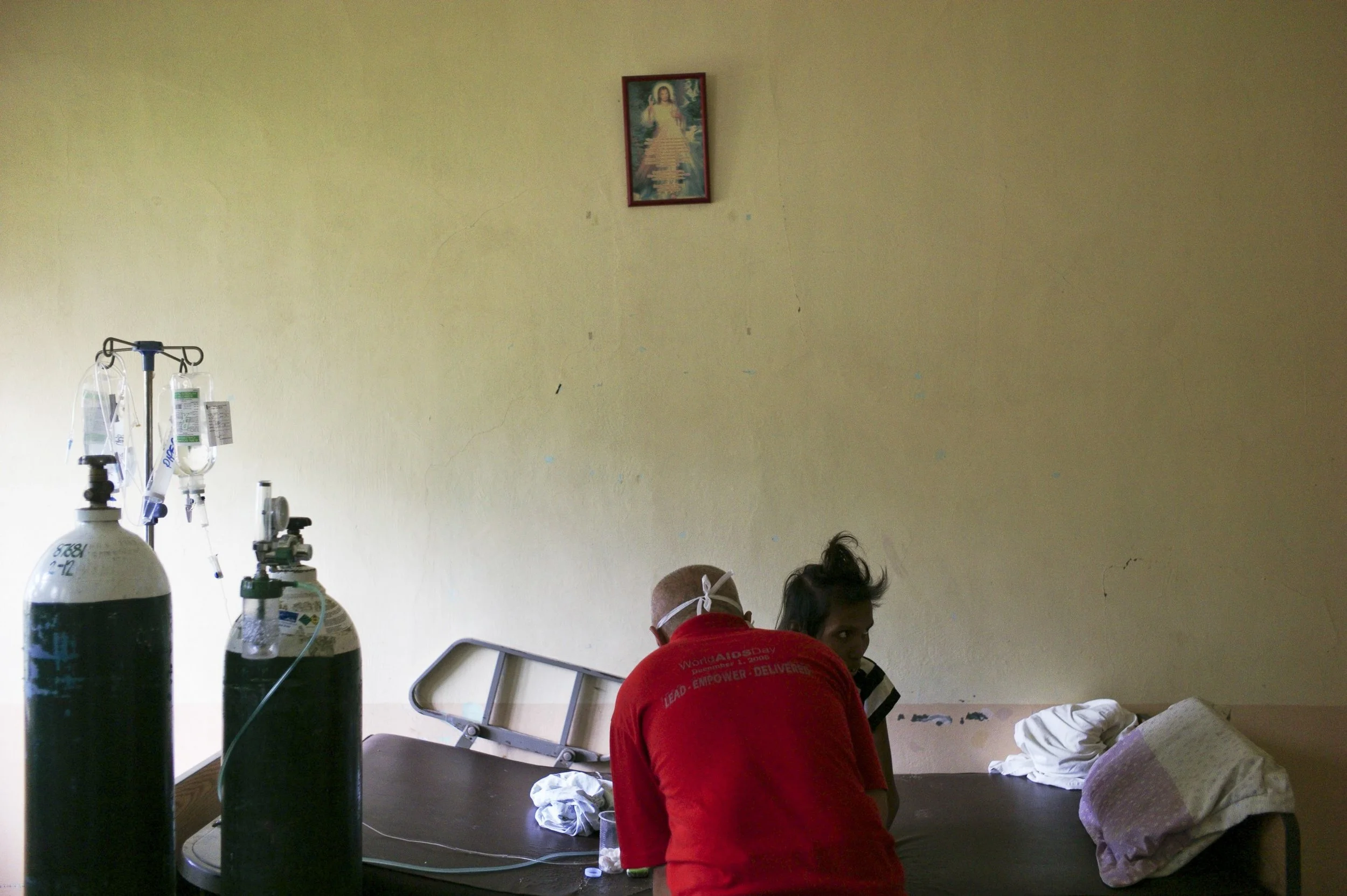Women and infants in Philippines at higher risk of HIV from "downstream" infections
Image from Pexels.com
CEBU, Philippines, Feb 15 (Thomson Reuters Foundation) - W hen Clarissa’s younger sister died, she had little time to dwell on her own grief. There were the three young children left behind to think of, two of them HIV positive.
Together with her own children, there are now seven youngsters crammed in her tiny, crumbling shanty in Cebu in central Philippines. Space and money are tight as they all depend on Clarissa’s husband who is a day labourer.
“The kids have no father or mother now. They have no one,” said the slight 31-year-old.
Clarissa’s sister and her partner both died from HIV-related complications traced back to injecting drugs. Clarissa suspects that it was her sister’s partner that got her started on drugs.
“Charity groups said the child who does not have HIV could be put up for adoption. But I couldn’t bear for them to be separated. And who will make sure the two take their medication?” said Clarissa, who did not want to give her full name.
Climbing HIV infection rates in the Philippines are bucking the global trend of decline. Along with Bangladesh, Indonesia, and Sri Lanka in the Asia-Pacific region, the Philippines saw the rate of new HIV infections increase by more than 25 percent from 2001 to 2011.
Increasing infections among injecting drug users combined with low condom use and high fertility rates have health experts worried about “downstream” HIV infections - when the virus spreads to people who are not typically at risk of HIV, like children who acquire the virus through mother-to-child transmission.
“Mother to child transmission is definitely an emerging problem,” said Genesis Samonte, head of the Department of Health HIV/AIDS surveillance unit.
Of the 84 children who acquired HIV through mother-to-child transmission since 1990, 17 - or one fifth - were reported in 2015 alone.
“Judging from the number of pregnant women we see in the clinics who test positive, this is definitely an underreported number,” Samonte said.
HIV RATES CLIMBING
In 2015 there were a total of 30,356 recorded HIV infections in the Philippines, more than 80 percent of which were reported since 2010.
At this current rate, the health department predicts that the total number of HIV infections will grow to 133,000 by 2022.
While majority of the infections cluster around men who have unprotected sex with men, HIV among injecting drug users is centred in Cebu City.
In shooting galleries that dot shantytowns, a person can get a narcotic shot for 50 U.S. cents and use a “service needle”, a syringe that the dealer has on rotation for anyone to use for free.
Department of Health surveillance studies show that a service needle can be used four to six times before it gets too blunt out and can infect as just as many people.
Needle exchange programmes aimed at ensuring drug users could access clean needles were criticised by Philippine legislators who said such programmes promoted drug use.
Citing the Dangerous Drugs Act which criminalises the possession and distribution of drug paraphernalia like syringes and a late 1990s city order that banned the sale of syringes without a prescription, Cebu city officials suspended needle exchange programmes in 2009.
Drug users had little choice but to buy from the black market - or share.
“Around this time we began seeing more HIV positive pregnant women,” said Ilya Tac-an, head of the Cebu City Health Department HIV/STI Unit.
An injecting drug user is typically male, in his 20s or 30s. Despite his high-risk behaviour, he is not likely to know his HIV status, making early detection of HIV among female partners difficult.
“Women discover they are positive when they are offered an HIV test during their pre-natal exam,” Tac-an said. “There is a missed opportunity for prevention and early detection because her partner did not disclose his status or does not know it.”
Chamberlain Agtuca, Jr. head of the Sotto HIV Treatment Hub in Cebu, said his clinic had treated 42 HIV positive pregnant women since 2010.
He estimated that 60 percent of the women were housewives and partners of men with high-risk behaviour.
STIGMA
The Cebu City Health Office has bolstered its early detection efforts by making an optional HIV test part of pre-natal exams in all private and public clinics.
But after the testing and diagnosis comes another problem in the Philippines, a deeply conservative, Catholic nation: stigma.
Many women do not return to the clinic for follow-up exams or anti-retroviral treatment which is a crucial first step in preventing mother-to-child transmission. Others move away to another town to avoid malicious gossip and are lost in the health tracking system.
Sotto Treatment Hub has designated one nurse to act as a case manager tracking women from when they test positive until they give birth and their babies are tested for HIV.
“We can still do this while numbers are low. That’s why we need to keep them low,” Tac-an said.
Editing by Ros Russell; Please credit the Thomson Reuters Foundation, the charitable arm of Thomson Reuters, which covers humanitarian news, women's rights, corruption, climate change. Visit news.trust.org



